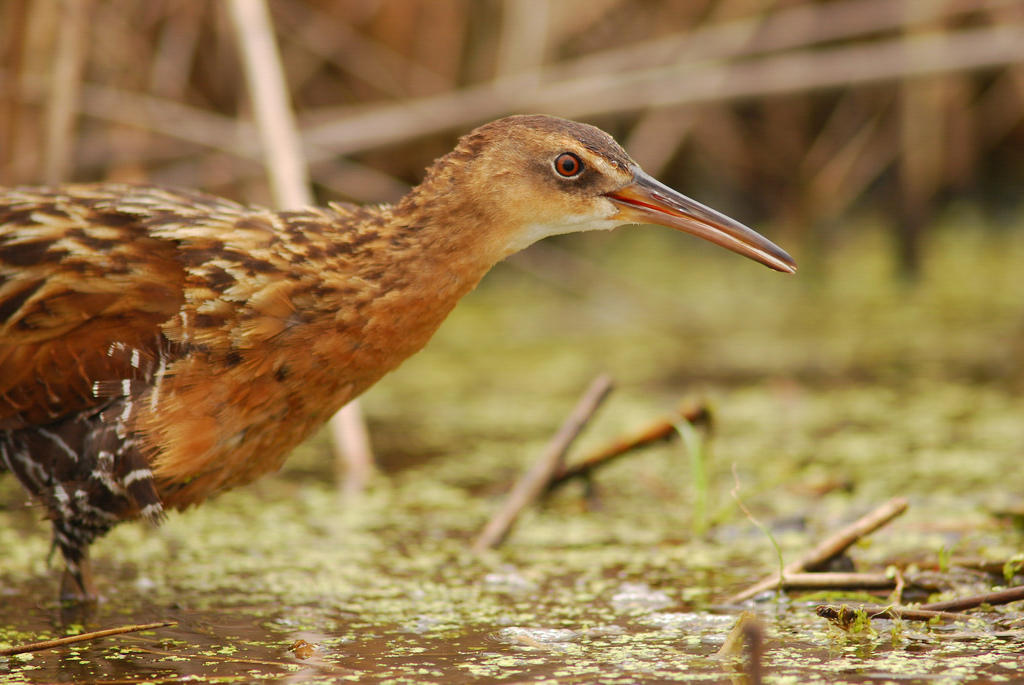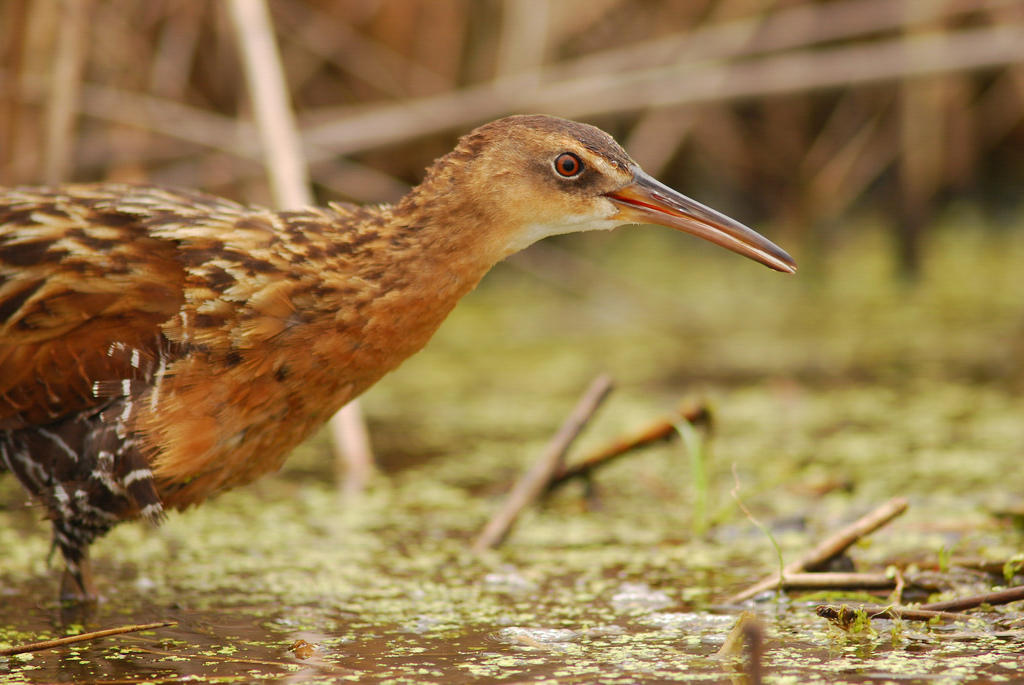Download a copy of the program schedule here.
The Great Lakes Coastal Wetlands Symposium registration includes five concurrent field trips organized by the Great Lakes Coastal Assembly and partner organizations. In a discussion format, each field trip examines best practices for managing water, vegetation, and wildlife. Please register for the symposium to make your field trip selection.
Thursday, September 19th
Field Trips
**All field trips are included with the symposium registration. Pre-registration is required.
1:00pm – 5:00pm
Field Trip 1: Penn 7: Wetland Site on the Maumee River
Visit the Penn 7 wetland site on the Maumee River near Toledo, Ohio and have to opportunity to provide input on the design phase of an urban coastal wetland restoration project at a former confined disposal facility (CDF). There will be an emphasis on beneficial reuse of dredged sediment, long term habitat maintenance, and considerations for Harmful Algal Blooms (HABs) in restoration design.
Site Description: The Penn 7 wetland site, a naturalized former confined disposal facility on the Maumee River in Toledo, Ohio comprised of 775 square miles, including several creeks within the Maumee River watershed. In 1987, The Maumee River was designated as an Maumee River Area of Concern (AOC) under the Great Lakes Water Quality Agreement. This site received new funding for the implementation phase which will create ideal fish nursery habitat as well as emergent and submergent wetlands used by a variety of native species.
Discussion Topics: This trip will include a deep dive discussion with site guides on the Maumee River Area of Concern (AOC). Beneficial Use Impairments and AOC delisting, lake level considerations for management; coastal resiliency; fish and wildlife management; and coastal wetland restoration in the context of harmful algal blooms. In addition, the group will discuss the challenges of public access and review partnership development under a Great Lakes Commission/ National Oceanic and Atmospheric Administration Regional Partnership Agreement. Input from the group will help direct on-the-ground restoration at this location.
Site Guides: Eric Ellis (Great Lakes Commission), Ryan Darnton (National Oceanic and Atmospheric Administration), Phil Hicks (Hull and Associates), Karen Ranney Wolkins (City of Toledo), Cherie Blair (Ohio Environmental Protection Agency).
Note: Plan on bringing a rain jacket and layers (in case of inclement weather); boots or sturdy shoes for hiking on rough unmaintained trails. At the site, restroom facilities will be either a portable unit or those available on the tour bus.
Field Trip 2: Stewardship Partnerships at Howard Marsh
Visit Howard Marsh to discuss stewardship partnerships with local communities to protect shoreline habitat and wildlife.
Site Description: Howard Marsh is one of the largest coastal wetland restoration projects on the Great Lakes, managed in partnership with Metroparks Toledo, Ducks Unlimited, and Ohio Division of Wildlife among others. Located on the shore of Lake Erie and a short drive from the Maumee Bay Lodge, the 732-acre coastal wetland site is now complete with state-of-the-art public access and hunting amenities. Planning and design are currently underway for an additional 232-acre coastal wetland restoration. Discussion Topics: While visiting Howard Marsh site, the group will participate in discussions on the Maumee Area of Concern Beneficial Use Impairment (wildlife habitat) removal; coastal wetland habitat restoration and resiliency best practices; lake level considerations for management; aquatic organism passage and hydrological connectivity considerations; invasive species best practices; addressing Lake Erie water quality; public access and park or hunting amenities; public engagement and communications; partnership development; and pre-restoration monitoring.
Site Guide(s): Russ Terry and Jason Hill (Ducks Unlimited), Tim Schetter and Denis Franklin (Metroparks Toledo), and potentially representatives from Ohio Division of Wildlife, National Oceanic and Atmospheric Administration, and Ohio Environmental Protection Agency.
Note: Field clothes and boots are suggested, but not required. The area has developed trails and boardwalks with restroom facilities are available onsite. During the trip, there will be time to walk the site for wildlife viewing and birding. Bring your binoculars if interested.
*Optional Early Return* To allow for optional birding at the site, field trip attendees may return to the Maumee Bay Lodge by 4:00pm or extended their stay until 5:00pm.
Field Trip 3: Kitty Todd Conservancy Preserve and Irwin State Nature Preserve
Visit Kitty Todd Preserve and Irwin Prairie State Nature Preserve to see oak savanna and wet prairie habitat that developed on sand and clay deposited by glacial Lake Warren.
Site Description: The Kitty Todd Nature Conservancy Preserve and Irwin Prairie State Nature Preserve cover more than 1300 acres. This site includes a 100-acre restoration project converted from a farm field to a wet prairie. Natural fires, Native American burning practices, beaver dams, and Great Lakes water-level fluctuations maintained the extensive wetland habitat that supports rare species including waterfowl and regionally common wetland species. In the early 19th century the rich land was drained requiring a hydrological restoration approach. The flat lakeplain landscape along Western Lake Erie extends 30 miles west of the shoreline; yet, the underlaying lake-clay soil enabled poorly drained conditions except where dry beach ridges supported the oak savanna.
Discussion Topics: The group will participate in a discussion about unique approaches to wetland restoration such as wetland and vernal pool habitats that benefit amphibians and reptiles, and will consider challenges of wetland restoration adjacent to residential and industry development.
Site Guide(s): Dennis Albert (Oregon State University) and Ashlee Decker (The Nature Conservancy in Ohio)
Note: The group will be walking mostly on developed trails and boardwalks with the potential to explore wetland complexes off a major trail so sturdy footwear is suggested.
Field Trip 4: Ottawa River National Wildlife Refuge on Lake Erie
Visit Ottawa River National Wildlife Refuge which includes thousands of acres of managed wetland impediments and their coastal connections throughout Lake Erie.
Site Description: The Ottawa National Wildlife Refuge Complex managed by U.S. Fish and Wildlife Service is a 10,296-acre property made up of diverse habitats including wetlands, forest, shrubland, grassland and sedge meadow habitats. Up to 20% of this conservation site is wetland impoundment managed as coastal connections throughout Lake Erie. Before and after monitoring data at the site has shown that these connections have helped to restore vital wetland functions including improved water quality and fish habitat. While on site, the group will explore the monitoring data and science associated with the recent restoration progress. Beyond this, the trip includes two distinct sites for a case study of the high-water level impacts: one site where the control structure is closed due to extreme high water; and another where high water and flooding continues.
Discussion Topics: Join a discussion on high-water management best practices; management of diked systems; bird, vegetation, and aquatic communities data; and diversity of wetland types and management scenarios.
Site Guide(s): Christie Deloria, Lori Stevenson, and Jason Lewis (U.S. Fish and Wildlife Service)
Note: Prepare to bring rain jacket and layers in case of inclement weather, however no special footwear is necessary.
Field Trip 5: Examine Diked Wetlands at Erie Marsh
Visit Erie Marsh to discuss best management practices for diked wetlands including infrastructure, fish passage, and holistic wildlife management. Chris May, Director of Restoration for The Nature Conservancy, will share the challenges, benefits, and unique features of a large-scale coastal wetland restoration at Erie Marsh Preserve in Monroe County, MI.
Site Description: The 956-acre project encompasses a series of impoundments that can be managed for a diverse matrix of wetland types, including mud flats, emergent marsh, and open water fish habitat. In 2014 a new fish passage structure was opened, establishing a hydrologic connection to Lake Erie after 60 years of separation. The group will learn about the planned bottomlands restoration project that will use innovative techniques to improve water quality and create emergent marsh in an open water environment.
Discussion Topics: Join a discussion with your colleagues about tracking and monitoring data to demonstrate increases in fish and herpetofauna species, and improve the habitat biodiversity.
Site Guide(s): Chris May (The Nature Conservancy)
Note: Bring a rain jacket and layers in case of inclement or windy weather, as well as boots or sturdy shoes fit for use following rains. Restrooms area are available on site.





